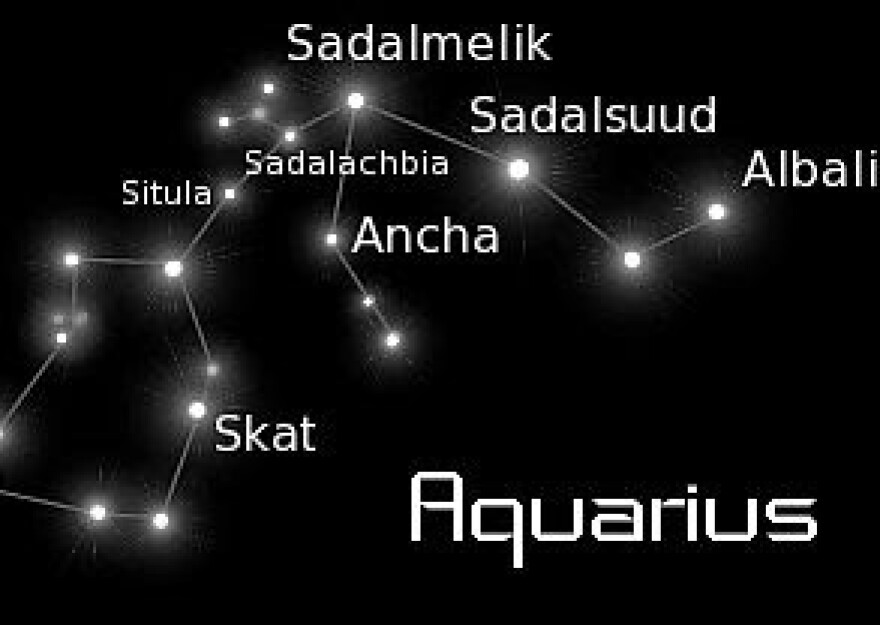Hello, this is Mary Stewart Adams with “The Storyteller’s Guide to the Night Sky.”
Overnight Tuesday to Wednesday, July 29 to 30th, is the peak of the annual Delta Aquarid Meteor shower. This meteor shower takes its name from the third brightest star ~or delta star~ in the constellation Aquarius, and the shower can be seen across the entire Earth.
It is commonly held that meteor showers result from Earth’s passage through the trail of stuff left in the wake of a passing comet. But with the Delta Aquarids, the ‘parent comet’ that might be causing the shower, is not known with any certainty.
However, to name a meteor shower, astronomers don’t use the name of the comet anyway, rather, they use the name of the constellation or star in front of which the meteors seem to shoot.
To find the story in this meteor shower, then, we have to consider the name of the delta Aquarius star. This star has the name Skat, which is derived from old Arabic star globes. The name Skat means ‘a wish’~so we could rightfully say that the delta aquarid meteor shower is a shower of wishing stars!
In 1756, the German-born astronomer Tobias Mayer noted a fixed star near where h was observing the radiant of the meteor shower. Twenty-five years later, William Herschel observed this same object and thought it was a comet, but afterwards realized it was a new planet, our Uranus.
Since it was found in the region of Aquarius stars, Uranus is said to have dominion over this region of the zodiac, and is related to all new technology~it being the first planet discovered with the use of a telescope.
The best time to look for the Delta Aquarid wishing stars is between midnight and dawn, especially Tuesday evening to Wednesday morning. And also note that many of these shooting stars leave persistent trains – glowing ionized gas trails that last a second or two after the meteor has passed.
I’m Mary Stewart Adams, from Emmet County’s International Dark Sky Park at the Headlands.

